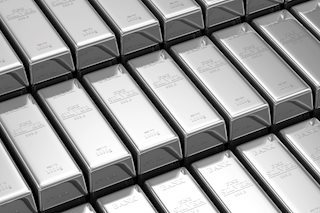Silver Price Forecast: XAG/USD bounces back to near $29.50 due to increased risk aversion
|
- Silver prices appreciate as traders adopt caution ahead of the incoming Trump administration.
- The non-yielding Silver may face challenges due to a hawkish outlook for the Fed’s interest rates in 2025.
- The safe-haven Silver received support as Israeli forces carried out attacks on two hospitals in northern Gaza on Sunday.
Silver price (XAG/USD) recovers its recent losses from the previous session, trading around $29.50 per troy ounce during the Asian hours on Monday. However, trading volume is lighter than usual ahead of the New Year holiday.
The safe-haven Silver appreciates as traders anticipate signals regarding the United States (US) economy under the President-elect Trump administration and the Federal Reserve’s (Fed) interest rate outlook for 2025.
The potential for Donald Trump’s tariffs and trade policies could trigger trade conflicts, increasing the risk aversion sentiment and supporting the demand for safe-haven assets like Silver. However, the outlook for fewer Fed rate cuts in 2025 might cap the upside for the price of the non-yielding Silver. The Fed cut its benchmark interest rate by a quarter point at the December meeting, and the latest Dot Plots indicated two rate cuts next year.
The US Dollar Index (DXY), which measures the value of the US Dollar (USD) against its six major peers, hovers around 108.00, slightly below its highest level since November 2022. Any further strengthening of the Greenback could limit the upside of the dollar-denominated precious commodities like Silver, as a stronger USD makes these assets more expensive for holders of other currencies.
Additionally, the safe-haven demand for Silver could gain upward support from heightened geopolitical risks stemming from the prolonged Russia-Ukraine conflict and ongoing tensions in the Middle East. On Sunday, Israeli forces carried out attacks on two hospitals in northern Gaza, including a strike on the upper floor of al-Wafaa Hospital in Gaza City, which killed at least seven people and critically wounded others.
Silver FAQs
Silver is a precious metal highly traded among investors. It has been historically used as a store of value and a medium of exchange. Although less popular than Gold, traders may turn to Silver to diversify their investment portfolio, for its intrinsic value or as a potential hedge during high-inflation periods. Investors can buy physical Silver, in coins or in bars, or trade it through vehicles such as Exchange Traded Funds, which track its price on international markets.
Silver prices can move due to a wide range of factors. Geopolitical instability or fears of a deep recession can make Silver price escalate due to its safe-haven status, although to a lesser extent than Gold's. As a yieldless asset, Silver tends to rise with lower interest rates. Its moves also depend on how the US Dollar (USD) behaves as the asset is priced in dollars (XAG/USD). A strong Dollar tends to keep the price of Silver at bay, whereas a weaker Dollar is likely to propel prices up. Other factors such as investment demand, mining supply – Silver is much more abundant than Gold – and recycling rates can also affect prices.
Silver is widely used in industry, particularly in sectors such as electronics or solar energy, as it has one of the highest electric conductivity of all metals – more than Copper and Gold. A surge in demand can increase prices, while a decline tends to lower them. Dynamics in the US, Chinese and Indian economies can also contribute to price swings: for the US and particularly China, their big industrial sectors use Silver in various processes; in India, consumers’ demand for the precious metal for jewellery also plays a key role in setting prices.
Silver prices tend to follow Gold's moves. When Gold prices rise, Silver typically follows suit, as their status as safe-haven assets is similar. The Gold/Silver ratio, which shows the number of ounces of Silver needed to equal the value of one ounce of Gold, may help to determine the relative valuation between both metals. Some investors may consider a high ratio as an indicator that Silver is undervalued, or Gold is overvalued. On the contrary, a low ratio might suggest that Gold is undervalued relative to Silver.
Information on these pages contains forward-looking statements that involve risks and uncertainties. Markets and instruments profiled on this page are for informational purposes only and should not in any way come across as a recommendation to buy or sell in these assets. You should do your own thorough research before making any investment decisions. FXStreet does not in any way guarantee that this information is free from mistakes, errors, or material misstatements. It also does not guarantee that this information is of a timely nature. Investing in Open Markets involves a great deal of risk, including the loss of all or a portion of your investment, as well as emotional distress. All risks, losses and costs associated with investing, including total loss of principal, are your responsibility. The views and opinions expressed in this article are those of the authors and do not necessarily reflect the official policy or position of FXStreet nor its advertisers.